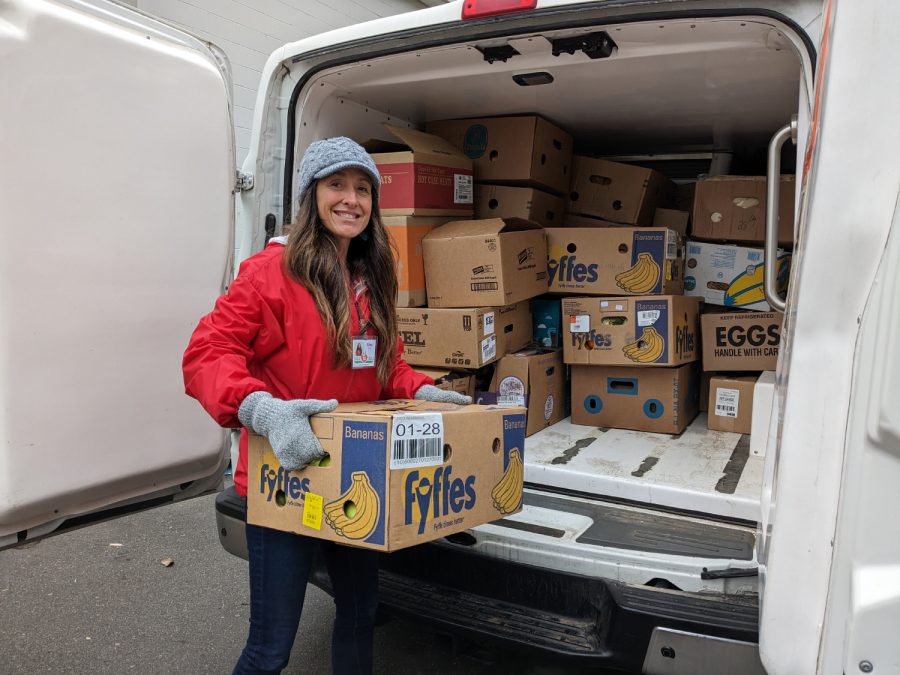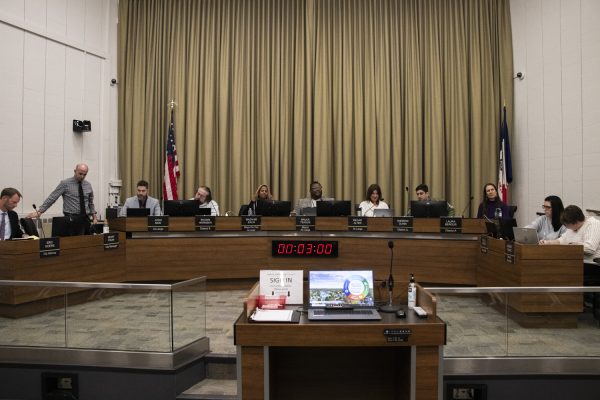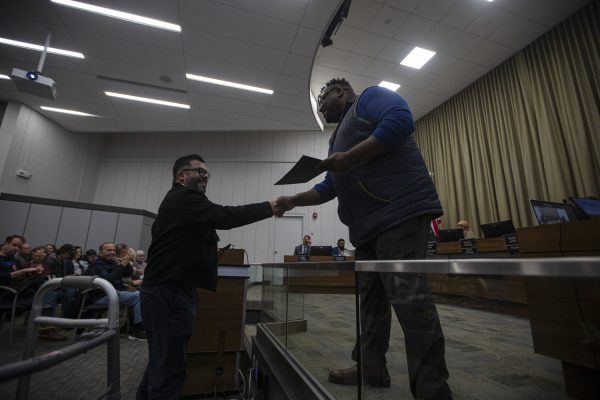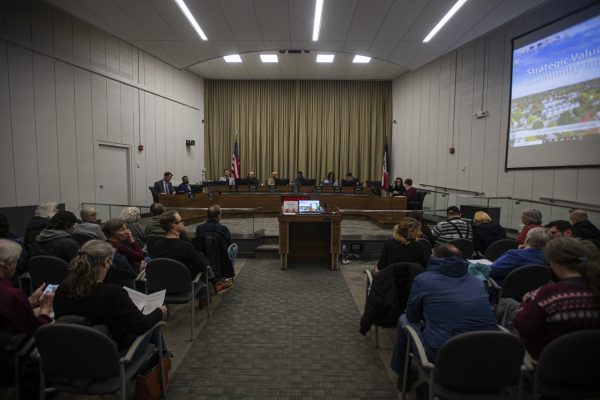IC food waste education program celebrates first year, recent waste reductions
“Love Food, Fight Waste” was created last April to educate the community on what they can do to reduce the amount of food they waste.
April 25, 2023
One year after Iowa City’s Love Food, Fight Waste started, food waste in the landfill has slightly decreased.
The program aims to educate the community about how they can diminish their food waste levels, which has seen a reduction in recent years through a partnership between the City of Iowa City and Table to Table, an Iowa City nonprofit that collects excess food and distributes it to the community.
Reducing food waste in the local landfill is an essential goal of Iowa City because of food waste’s role in harmful environmental emissions, Iowa City Climate Action Coordinator Sarah Gardner wrote in an email to The Daily Iowan.
“Like other organic material, once food waste ends up in the landfill, it undergoes a decomposition process that results in methane,” Gardner wrote. “As a greenhouse gas, methane is more than 25 times more powerful at trapping heat in the atmosphere than carbon dioxide, and it makes up about 20 percent of global emissions overall.”
Iowa City has seen some success in food waste reduction in recent years. According to the Love Food, Fight Waste website, food waste went from making up 25 percent of the city’s total landfill waste in 2017 to a little over 20 percent in 2022.
“A 5 percent reduction might not seem like a lot, but in fact, that equates to over 6,000 tons of food,” the website states.
Table to Table Communications and Development Coordinator Anne Langebartels said the partnership with the city sparked from conversations between the nonprofit and the city about strategies to decrease the amount of food waste in the city’s landfills.
The two entities decided that creating an educational program to teach the community about food waste issues and reduction strategies would benefit the city’s food waste goals, Langebartels said.
Langebartels said this kind of outreach and education at an individual level is important because 40 percent of total food waste in the U.S. comes from household food waste.
RELATED: New Iowa City program to educate residents on eliminating food waste
In the past year, Table to Table and Iowa City’s Landfill and Recycling Center produced monthly educational social media posts related to food waste that both of the partners post on their various platforms, Langebartels said.
The topics of these posts have included food safety and expiration date information, tips on how to keep food fresh for longer, creative recipes to use up food instead of throwing it out, and a local food waste profile.
“We’ve worked hard on putting together all of this great content and trying to make it really interactive, including activities with each topic that people can implement in their own homes,” Langebartels said.
Iowa City Recycling Coordinator Jane Wilch said the program has also engaged in community outreach efforts, the most recent being when she and Langebartels spoke to students at South East Junior High School about the program last week.
The next step for the program is to explore video production content, which is something the program did not do in its first year, Wilch said. This visual format will aim to reach individuals who are more visible and auditory learners as opposed to only reading content on a social media post, she said.
Wilch said this round of content would start being released in mid to late summer to give the program time to create and develop it.
Gardner wrote the city is fortunate to have an organization like Table to Table as it created a unique opportunity to create a program like Love Food, Fight Waste.
“We are really lucky to have an awesome organization like Table to Table in our community, which has done really great work developing a responsive network of partner organizations that not only help make sure food doesn’t go to waste but that the surplus food also helps fight food insecurity,” Gardner wrote.














